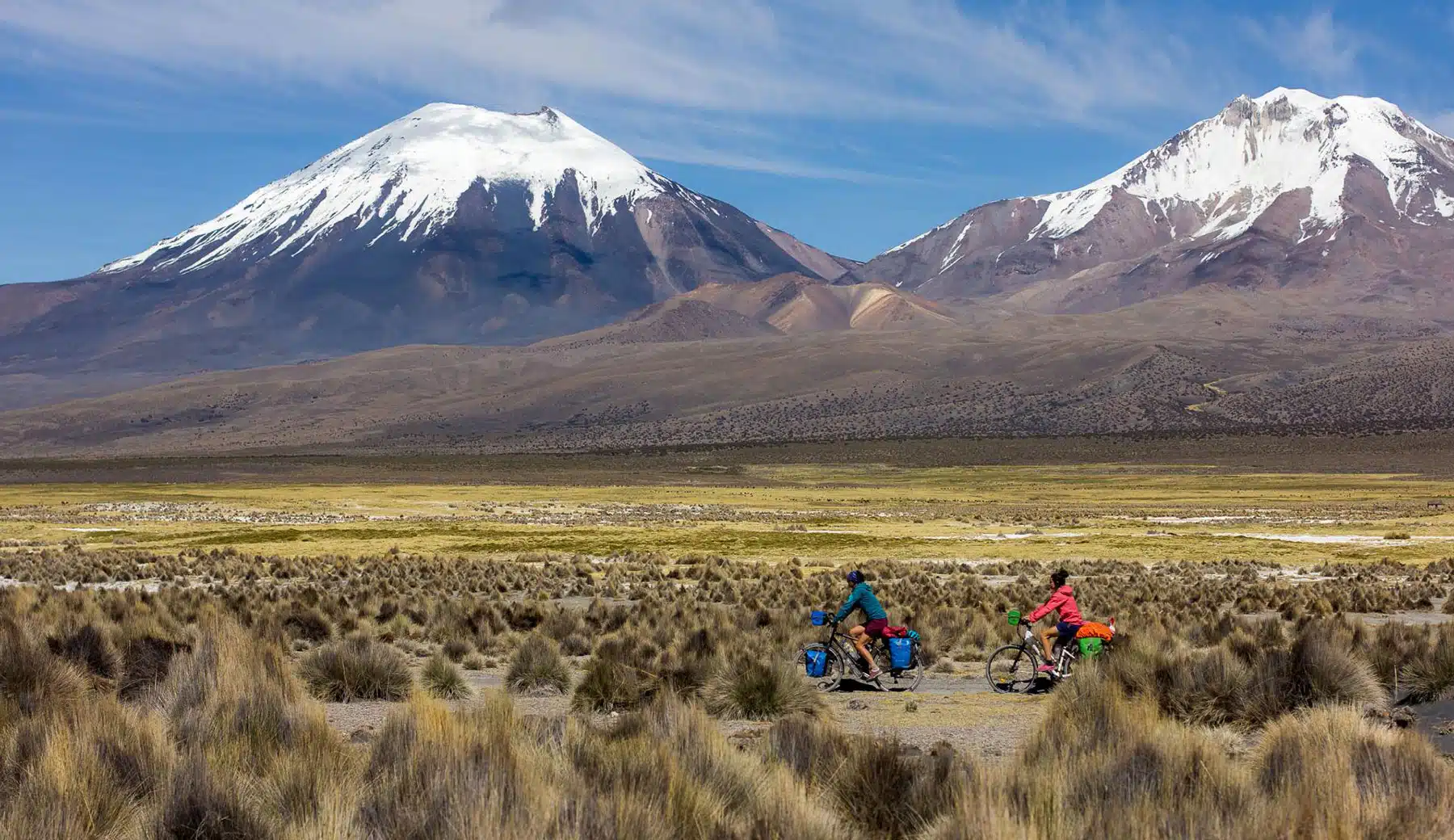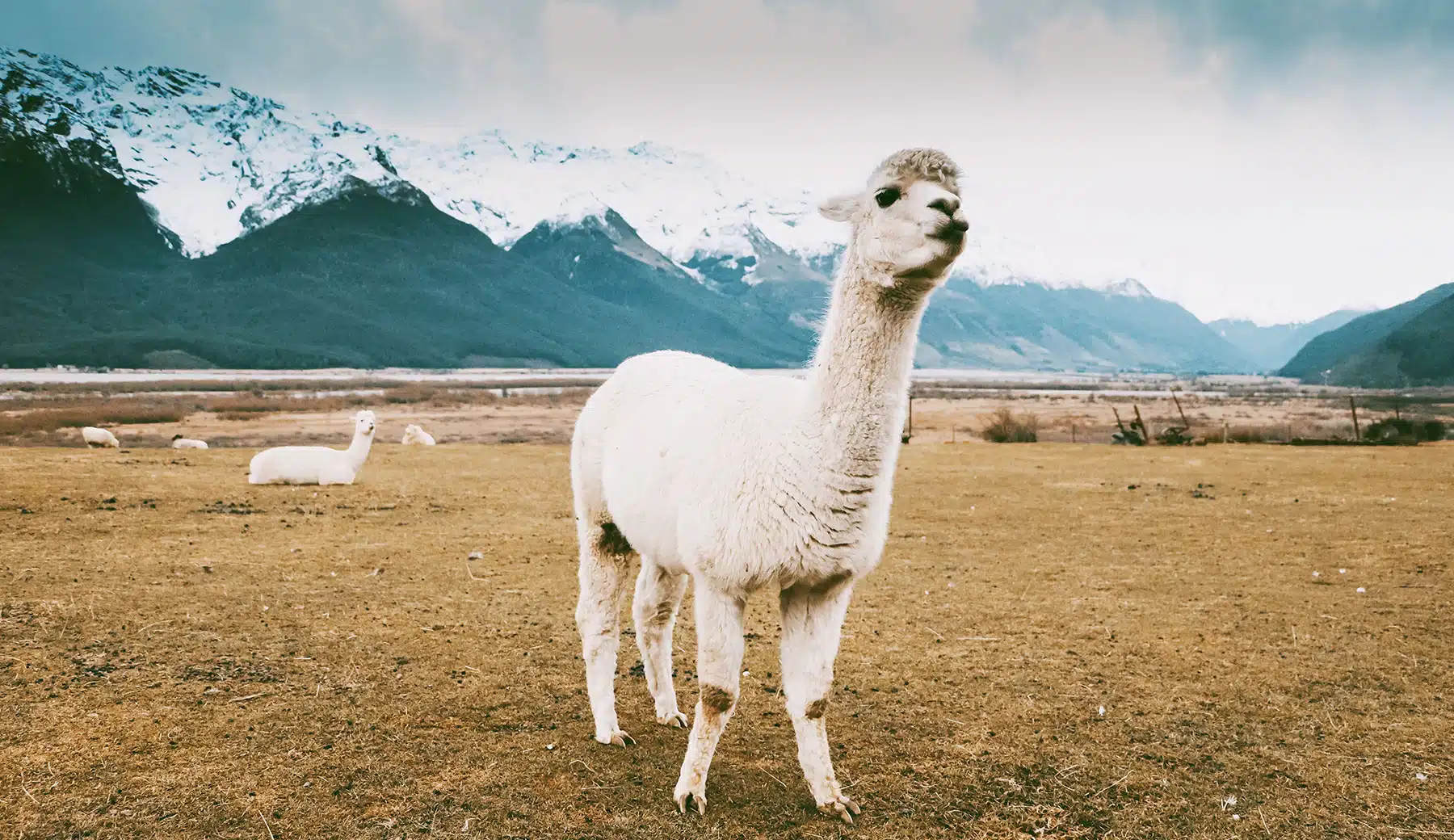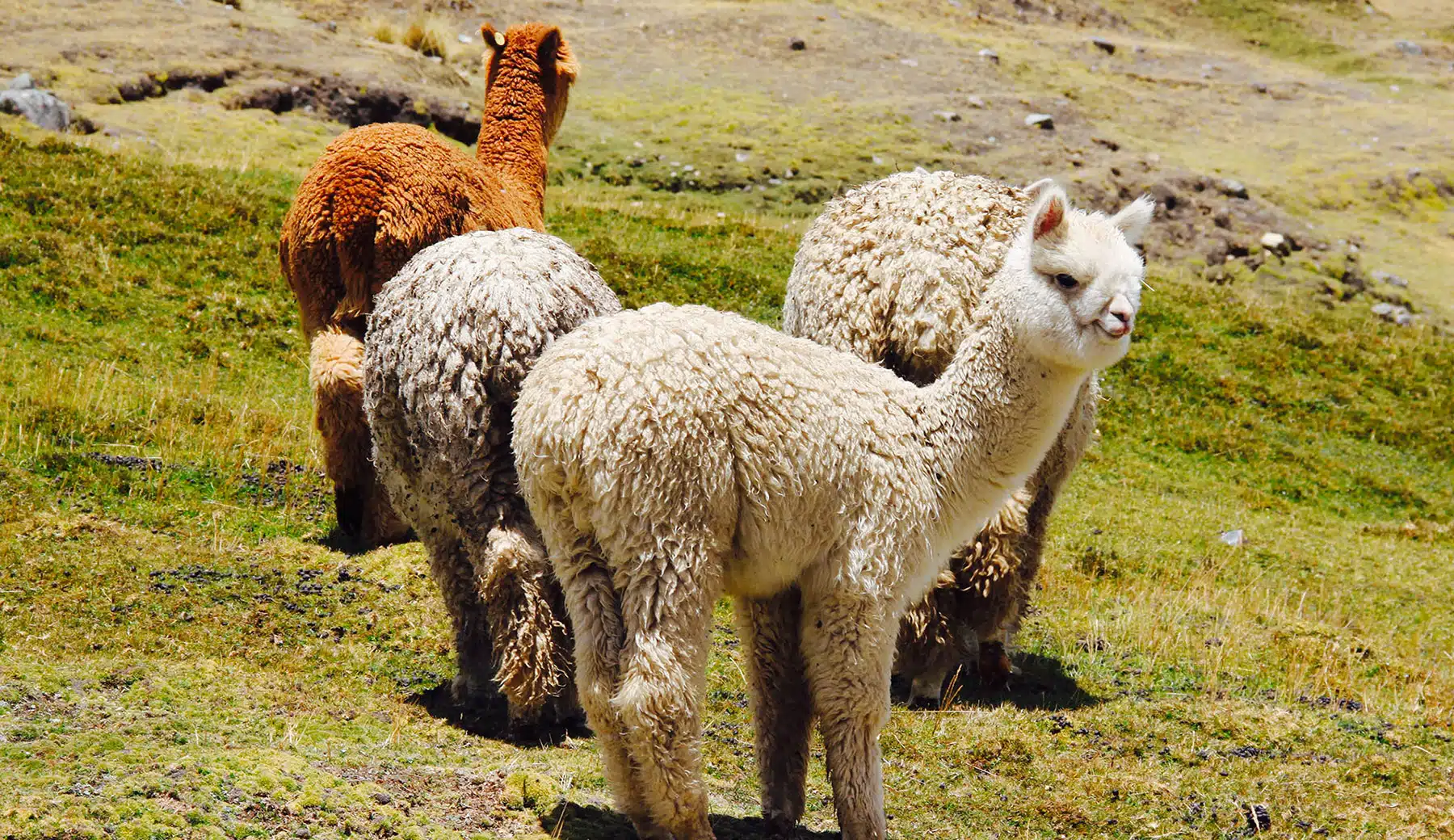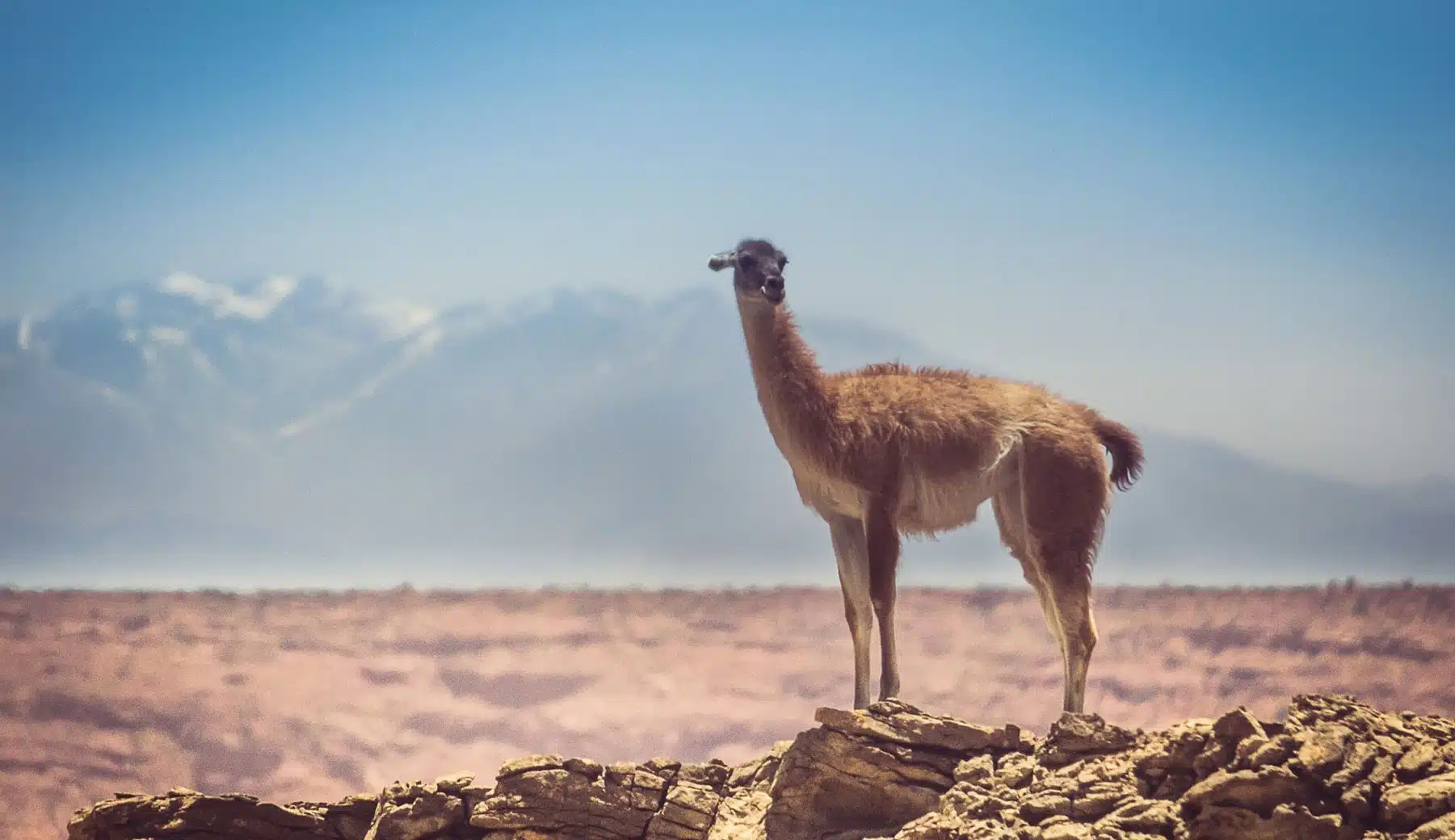The alpaca is a fascinating animal, both elegant and robust, It belongs to the camelid family, along with the llama, vicuña and guanaco.
Domesticated for over 7,000 years by the Andean peoples, today it is a symbol of Peruvian textile expertise.
But what sets it apart from its cousins, and whyis it so precious?
Let’s plunge together into the world of South American camelids.
Andean camelids: four species with unique characteristics
South American camelids are divided into two domesticated and two wild species:
– The alpaca (vicugna pacos): Small and graceful, it is bred mainly for its wool, which is one of the finest and most luxurious in the world.
– The llama (lama glama): Larger and more robust than the alpaca, it is used as a pack animal and can carry heavy loads over long distances.
– Vicuña (vicugna vicugna): A protected wild animal, its wool is the most precious in the world due to its exceptional fineness ( less than 15 microns).
– The guanaco (guanicoe llama): Wild ancestor of the llama, It lives at high altitude and has a thick fleece that protects it from extreme conditions.
The alpaca: an emblematic animal of the Andes
The alpaca is native to Peru, but is also found in Bolivia, Argentina, Ecuador and Chile. It is found mainly on the high plateaux of the Andes, at altitudes of up to 4,500 metres, where it adapts to extreme climatic variations. In a single day, temperatures can go from -30°C at night to +30°C in full sun.
Thanks to its thick , thermoregulating fleece, the alpaca can withstand these conditions without difficulty. Its coat protects it not only from the freezing cold, but also from the intense UV rays that hit the Andes mountains.
A social way of life and an ecological foot
Alpacas live in well-structured herds:
– A dominant male watches over a group of females and their young.
– Young males form a separate herd until they can challenge an adult challenge an adult male to take his place.
They communicate using specific postures and vocalizations that enable them to enable them to exchange information and regulate social tensions.
Unlike sheep and goats, alpacas have no hooves. Instead, they have soft bearings that distribute their weight without damaging the floor. This ecological characteristic makes an animal that is far less destructive for the environment than other species bred for their wool.
Physical characteristics adapted to high altitude
The alpaca is a medium-sized animal:
– 75 cm to 1 m at the withers, but rarely over 90 cm.
– Weight: between 55 and 80 kg depending on age and sex.
– Diet: mainly grass and hay, with a highly efficient digestive system enables it to absorb more nutrients than other ruminants.
Its longevity is impressive: It can live between 15 and 25 years , making it an enduring companion for Andean breeders.
A preserved textile treasure
Archaeological evidence shows that the alpaca was domesticated 7,000 years ago, in the Puna region of Peru. Since then, it has always been a precious resource for the Andean peoples, providing soft, warm, hard-wearing wool used to make luxury garments.
Today, Peru remains the world’s leading producer of alpaca wool, with around 4 million specimens, or 70% of the world population.
The main reason alpaca is so popular is because of the quality of its wool, which surpasses that of sheep in terms of softness, warmth and durability. Its environmentally friendly farming makes it an ecological and ethical alternative to other animal fibres.
By choosing baby alpaca accessories, you’re opting for an exceptional material, born ofa thousand-year-old tradition and unique know-how.




